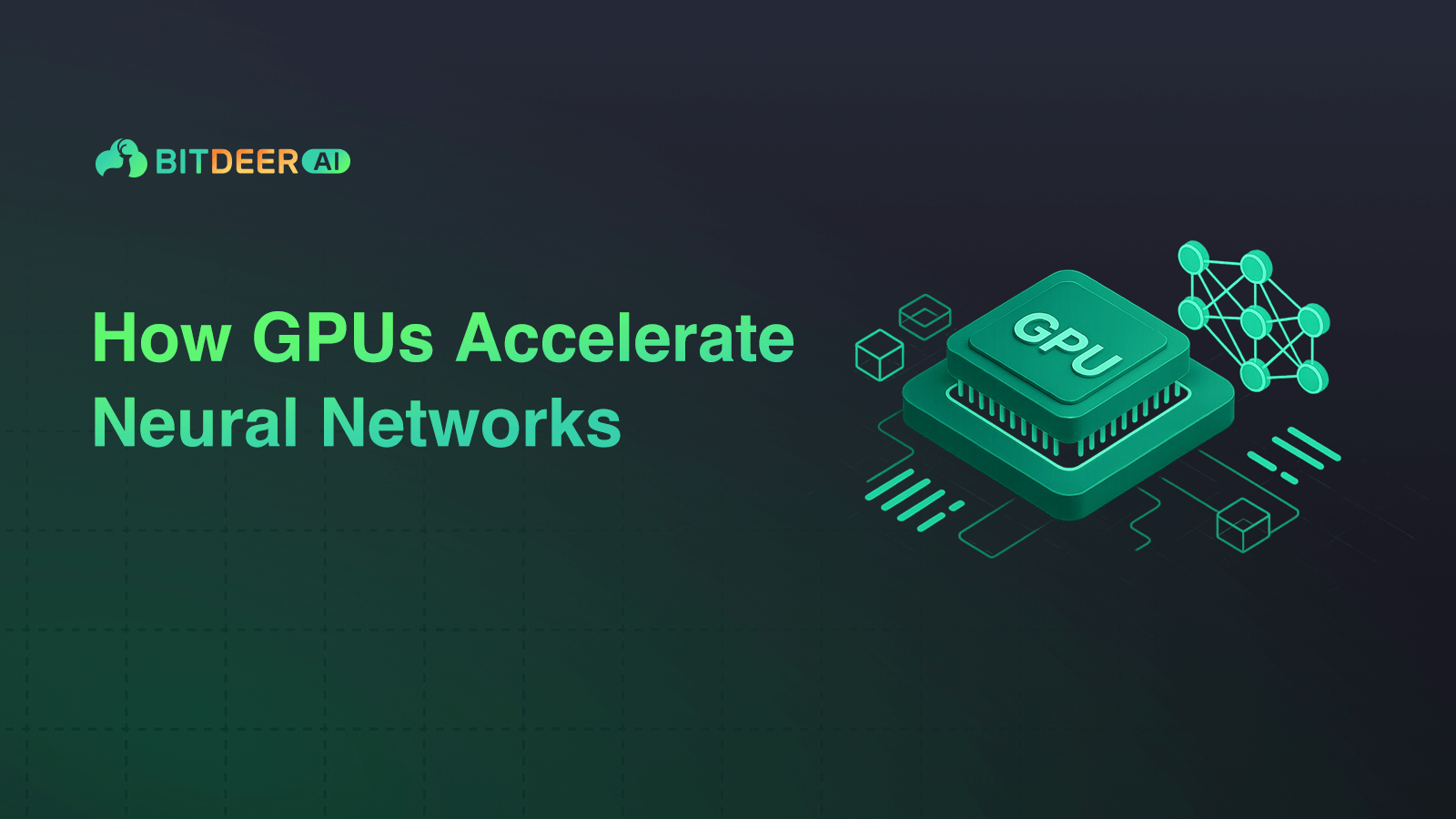How Neural Networks Leverage GPUs: From FLOPs to Memory and Precision

As deep learning models scale into the billions and trillions of parameters, the backbone of modern artificial intelligence is no longer just algorithms, but the hardware that powers them. Graphic Processing Units (GPU), originally designed for graphics rendering, have become the workhorses of neural network computations. In this article, we explore how GPUs power neural networks by dissecting the key components: floating point operations per second (FLOPs), memory, precision support, interconnects, and the nature of parallelism itself.
Forward and Backward Passes: The Math Behind Neural Networks
Every neural network computes in two main phases: forward propagation and backward propagation. During forward propagation (aka forward pass), input data is transformed as it passes through each layer to produce predictions. Each layer involves matrix multiplication, bias addition, and activation functions. For example:
output = activation(weights * input + bias)
In the backward pass, gradients are computed to update the model's parameters. This is done via the chain rule of calculus and consists of matrix multiplications and element-wise operations. Both forward and backward passes require billions of multiply-and-add operations per training batch.
GPUs are particularly well-suited for neural network computation because the core operations, such as matrix multiplications, dot products, and convolutions, are mathematically deterministic and inherently parallelizable.
What Are FLOPs, and Why Do They Matter?
FLOPs measure a GPU's theoretical maximum compute capacity. Modern AI-focused GPUs like NVIDIA's H100 or B200 can perform tens of petaFLOPs in FP8 or FP16 precision.
Why does this matter?
- Training Speed: Higher FLOPs mean more operations per second, reducing the time per batch.
- Inference Latency: In real-time applications like chatbots or autonomous vehicles, high FLOPs allow for fast inference.
- Scalability: When training massive models like GPT-4, FLOPs determine how quickly experiments can iterate.
However, FLOPs alone don't guarantee performance and other factors like memory bandwidth and software optimization also play crucial roles.
GPU Memory: More Than Just Storage
While FLOPs indicate how fast a GPU can compute, onboard memory determines how much it can compute at once.
Neural network training and inference require memory for:
- Storing model weights (often billions of parameters)
- Storing intermediate activations from each layer during the forward pass (needed for the backward pass)
- Storing gradients during backpropagation
Insufficient memory may require models to be split across devices, increasing complexity via greater inter-GPU communication overhead.
High-bandwidth memory (e.g., HBM3e in H100/H200/B200) allows data to be fed to compute units without bottlenecks, enabling GPUs to operate closer to their FLOPs ceiling.
GPU Parallelism: SIMD at Scale
At its core, a GPU is a massively parallel processor with thousands of cores. Unlike CPUs, which are optimized for low-latency sequential execution, GPUs use SIMD architecture (Single Instruction, Multiple Data) to execute the same operation across many data points simultaneously.
In neural networks, matrix multiplications and convolutions fit perfectly into this paradigm:
- Cores execute many threads in parallel, each computing parts of a matrix
- Threads in a warp run in parallel across cores, executing in lockstep for efficient neural network computations
Frameworks like CUDA and libraries like cuDNN allow developers to write parallelizable operations that fully utilize GPU cores.
Precision Trade-offs: FP32 vs FP16 vs FP8 vs FP4
Different stages of training and inference tolerate different levels of numerical precision for tensors. GPUs today support multiple precisions:
- FP32: Full precision, accurate but computationally expensive
- FP16/BF16: Half precision, widely used in training with mixed-precision techniques
- FP8/FP4: Emerging low-precision formats used in inference and sometimes training
Lower precision offers faster throughput and reduced memory consumption, but can affect model accuracy if not managed properly. NVIDIA’s Transformer Engine automatically selects the appropriate precision based on layer sensitivity.
High-Speed Interconnects and Scale-Out Efficiency
When training large models across many GPUs (e.g., 8, 72, or even 10,000), fast communication between GPUs becomes critical. NVLink, NVSwitch, and NVLink-C2C provide high-bandwidth, low-latency links to share activations, gradients, and weights.
Without such fast interconnects, distributed training faces communication bottlenecks that can diminish the benefits of FLOPs and memory capacity. In tightly coupled systems like NVL72 (72x B200), all GPUs form a unified memory and compute domain, significantly reducing synchronization overhead.
Conclusion: The Right GPU for the Right Job
In deep learning, FLOPs determine your ceiling, memory defines your scope, precision affects your stability, and interconnects determine your scalability. GPUs like H100, H200, and B200 each make different trade-offs to serve varied AI workloads.
As we move into the age of trillion-parameter models and real-time AI agents, understanding how neural networks interact with GPU hardware isn't just technical trivia; it's strategic infrastructure knowledge. Choosing the right hardware stack can accelerate breakthroughs, cut costs, and define competitive advantages in the AI era.